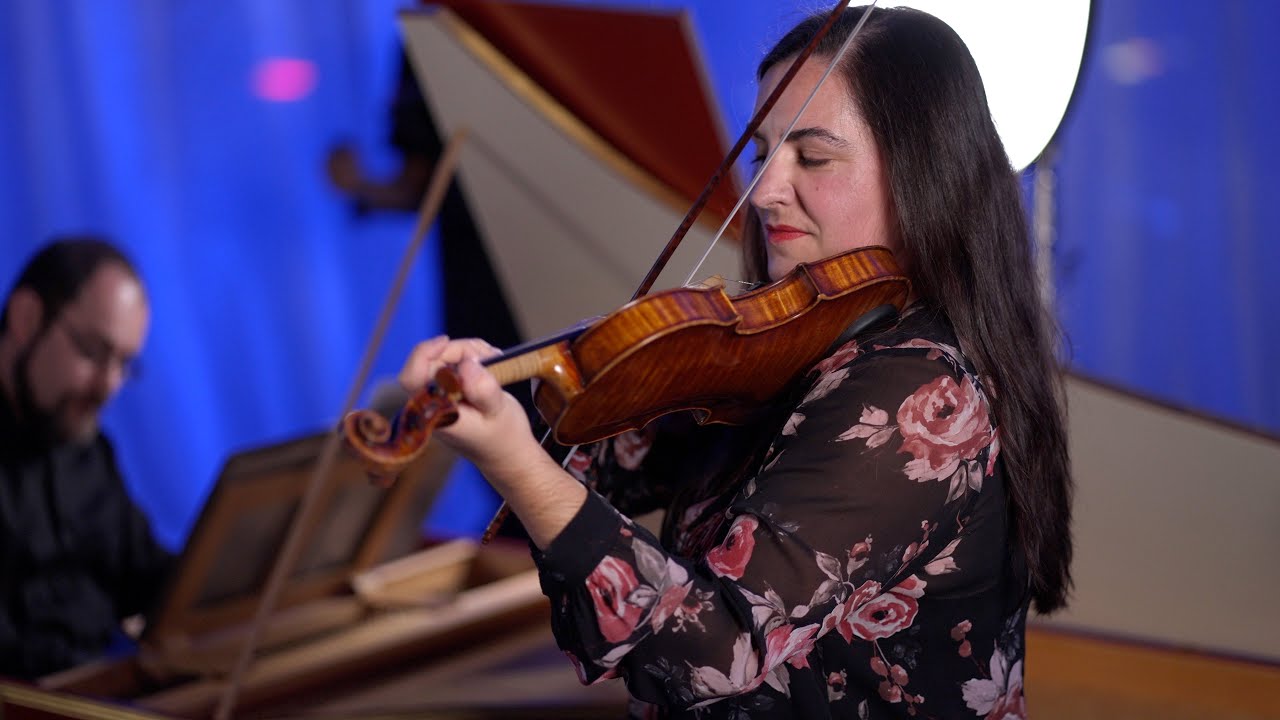Debussy in original colours (but briefer clothes)
NewsThe Trio Zerline of Lyon, France – Alice Szymanski, flute, Estelle Gourinchas, viola, Joanna Ohlmann, harp – have recorded on the Paraty label what sounds like a fascinating album of Debussy on the instruments and in the sonorities of his time.
It is a commendable enterprise, founded on original research. I very much like the trio and their enterprising spirit.
However, something jars. The performers are wearing non-period shorts as they make the recording and three men at electronic consoles are tweaking the sound. Do clothes not affect ambience? And is audio manipulation an authentic touch?
Your thoughts, please.






Goodness, Norman. What do YOU wear while doing your work? A suit? Straitjacket?
To make a good sounding recording, you have to manipulate the balance…no option there. As for the clothes, the recording seems to have been made in the summer so why not? I am more annoyed by the violist’s intonation than anything else. Clearly, she is not comfortable with that period 435 Hz pitch.
Absolutely, I think 436,6782 Hz would be perfectly suited for her.
Thank you so much for that witty comment! But bottom line : she plays out of tune.
Sometimes your sense of humor escapes me. (At least, I hope you were trying to be funny and not at all serious about this post…)
What sense of humour?
It’s tempting to read too much significance of contemporary instruments in the sound and quality of a performance, especially one that’s recorded. It may have more meaning if playing Corelli on 300-year-old violins, but I’d venture to guess that half the instruments in your friendly neighborhood symphony orchestra were crafted while Brahms was alive and kicking. A lot of professional musicians like to play on old instruments, and there are a lot of those vintage instruments out there.
The crafting of the French instruments used in this recording spans a good 80 years — from a silver Louis Lot flute in 1881 to a 1922 viola made by a Welsh luthier living in Paris to one of the last Erard harps made in 1962 — this, long after Debussy breathed his last. The program notes contain some admirably researched pedigree on who played each instrument.
But the sound color of a recorded performance is in the timbre and voice of the instruments (many other choices would sound just as fine); in the engineering balance of the voicing, in the placing of microphones, in the technical specs of the equipment; and in the sound of the hall. To pursue that last point, the liner notes don’t make a deal of the performing venue. For the record, though, it took place in the old CJ Bonnet et Cie silkworks factory in Jujurieux near Lyons, a building that dates from 1835. I’d be hard-pressed to listen for the sonic quality of the sneakers the players were wearing.
The esteemed editor of this site seems to be obsessed by what the attire at any time the players perform that are not of his taste. What difference does it make? Either don’t look, don’t attend, and please stop digressing on this obsession…
Thanks for drawing this to our attention. I’m not sure the clothing matters in a recording? Especially if the space was not air conditioned, or if air conditioning had to turned off for the recording?
Must be a slow news day in the classical world for this to be “a topic.” But in the spirit of N.L.’s suggesting that “authenticity” (if that loaded term is even still being bandied about) goes beyond accurate texts, instruments fitted to period standards and played in a presumed “informed” (no, not “woke,” just “informed”) manner, I am reminded that no less than Ernest Newman once pondered in print over what the word “allegro” really meant in Mozart’s time when newspapers of the era reported that pedestrians were routinely being hit by and run over by horse drawn vehicles, and that nothing faster than those vehicles was imaginable to them.
That is, what could “fast” really mean to people for whom those vehicles were moving too fast for them to avoid, compared to the derring-do involved in crossing the street in the automobile age?
Newman might well have asked a similar question about what “forte” or “loud” really meant before our modern era of noise pollution.
Still nothing faster than horses in Beethoven’s Vienna, but many find his metronome markings to fast for modern listerner’s ears (and player’s fingers).
No, not jarring at all to my ears, where the music actually unfolds. I don’t resent these artists at all for their casual recording dress, even as they’re being filmed for the teaser.
And when they perform this piece in concert, would anyone expect, much less demand, to see them in the styles popular in 1915, the year Debussy completed this trio? Bien sur que non!
In any case, I feel like playing a bit of Mozart…now where did I put that powdered wig?
If you enjoy the magic of a recording and like to imagine the performers in authentic period dress without audio engineers tweaking the sound (pretty much compulsory on modern recordings), then don’t lift the curtain to reveal the actual identity of the wizard.
Spot on. There is evidence, notably presented in an article in Musicae Scientiae 12 (2), that dress does affect the perception of performers by an audience. The experiment included performers perceived only in ‘point-light condition (body movement can be seen, but not appearance). But it is idiotic to think it can affect perception of the music.
Never mind what they look like… it sounds terrible…
I suppose you could also complain that the “period” performers are not male.
I prefer audio-only recordings personally, as seeing the players can be distracting.
Well I think listening only is the Best we can do to music but sometimes we need to see the performer acting in that moment. I love watching Martha Argerich playing the piano but I can still feel what she is playing!! It is more about music…
Audio recordings are the biggest firm of fakery, music was always meant to be performed in front of an audience, it was, still is, meant to be a communal experience.
(1) Is “ambiance” relevant here? Do you mean anything by it other than a blunt instrument to beat someone?
(2) Is “authenticity” relevant here? Since no one is actually living in the 19th century (perhaps some wish they were) no one has any idea what is authentic, but merely what he or she wants it to be. So it sure looks like a club with which one can forcefully demonstrate one’s discomfort or disapproval of something.
Hey dullards, I think he has his tongue firmly planted in his cheek.
How can we know that?
One needs a bit more wit if that was indeed the case.
Anything new based on thorough research is always welcome. The repertoire is vast enough!
I enjoyed the recording a lot even though playing Takemitsu in Debussy’s original colours feels a bit like female logic. Something along the line of “My husband cheats so much on me that I am not even sure he is the father of our children”.
Puh-Leez. Just listen.
Can you hear the shorts?
What about the man who hates Wang Yuja’s green dress? Was it because the Bartok concerto was somehow diminished by her costume. Give me a break. Oh, wait. Was I just trolled, LOL?
Yuja Wang should take over.
(A joke of course)
Several young attractive female performers are now presenting themselves in attractive or at least eye catching fashion and why not?
Don’t be daft, their are musicians not a reenactment troupe.